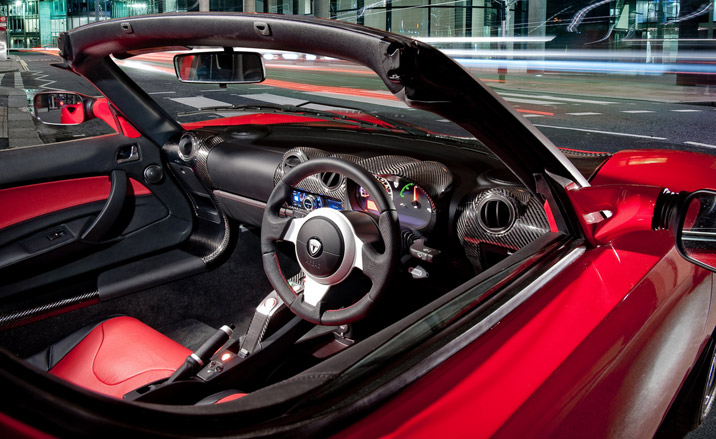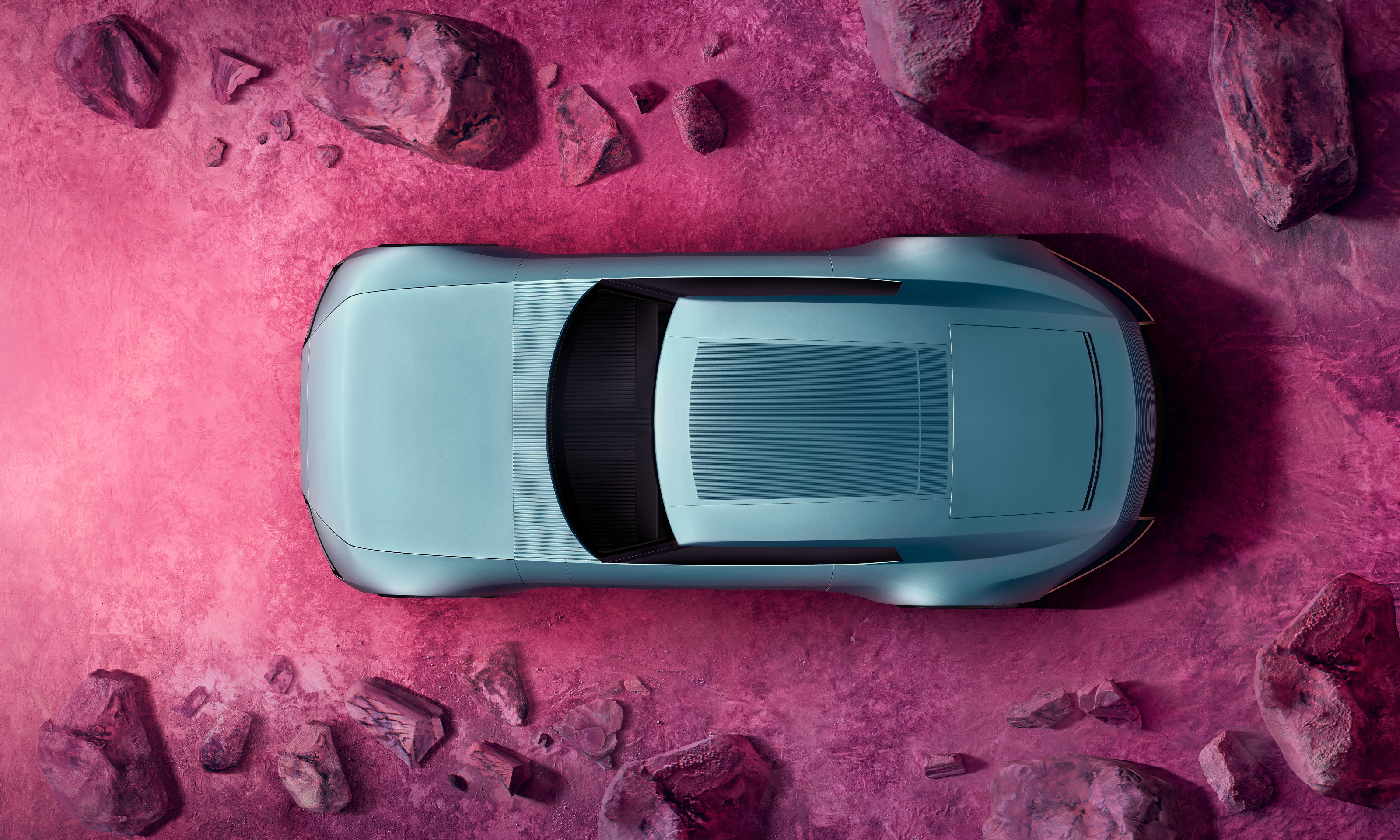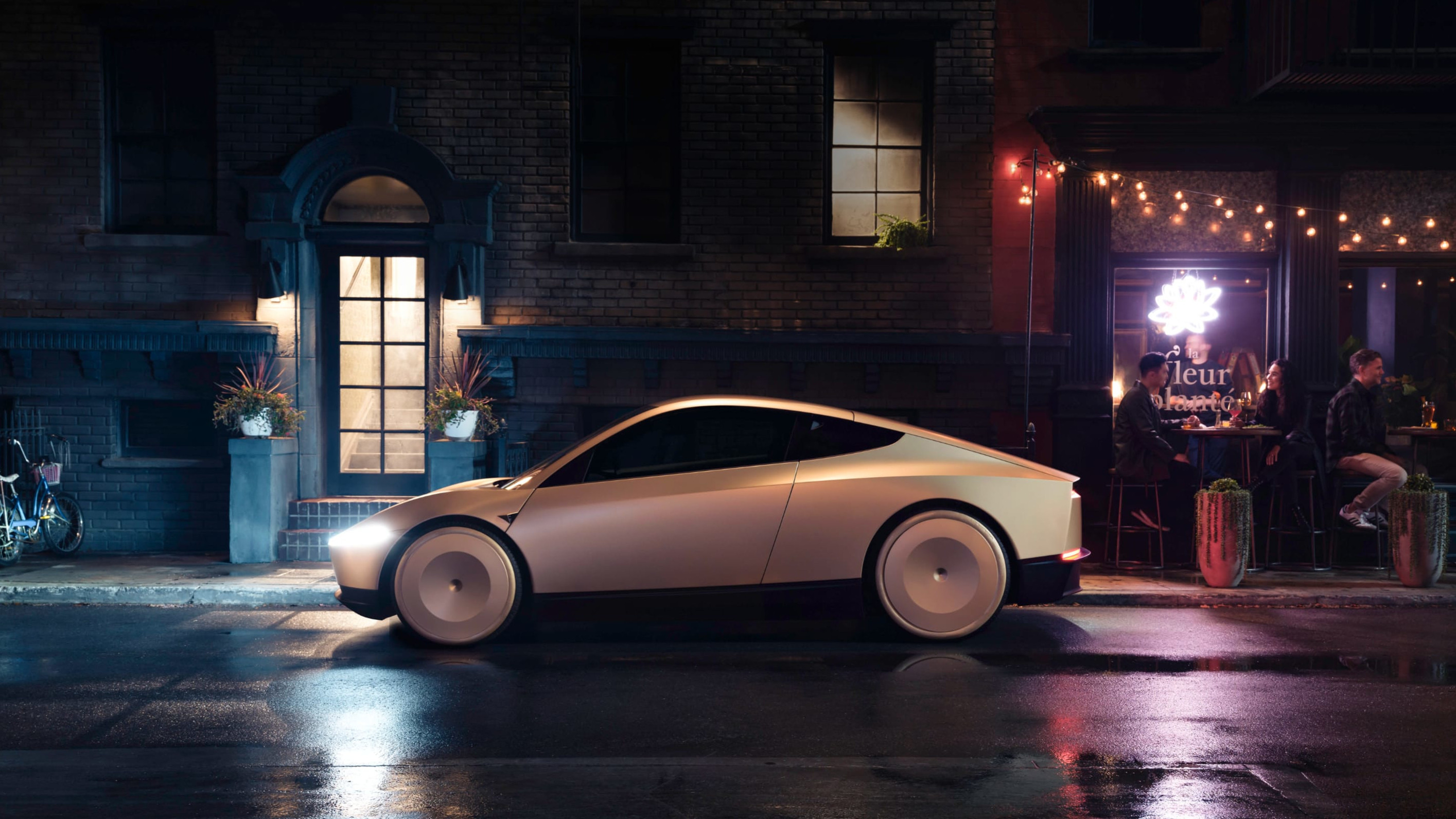Tesla Roadster

A lot has been written about the Tesla Roadster. Now in its 2.0 iteration (yes, in the future, cars will get upgraded just like software), the Roadster recently started rolling silently off the production line in right hand drive format, giving British - and Japanese - enthusiasts no excuse not to add one to their fleet.
Since last Summer, the company has also opened several European outlets, a clear shift away from its very Californian roots towards an eventual goal of market leader in the EV sector.
Back when Tesla was founded in 2003, that goal was laudable but highly ambitious. The all-electric car was still firmly stuck on the golf course and delivery route and the world's cities hadn't even started opening up their congestion zones to ZEVs. Much has changed. Today, there isn't a major manufacturer without a viable all-electric or hybrid concept in their workshops and this decade will see the roads start to hum with the sound of AC-powered transmissions.
The original Roadster debuted in 2008 after a couple of years of prototyping. Tesla's route to all-electric domination is deliberately top-down, with the $100K sticker price pitched not just at wealthy environmental advocates but also sports car enthusiasts.
To this end, the Roadster was developed as a performance showcase, making full use of the 'instant on' qualities of a one-speed electric transmission, where the throttle is effectively little more than a switch that lets in a massive thump of torque. There's also a Roadster Sport model that manages to eke even more power out of the company's hefty proprietary battery pack.
To date, over 1,000 Roadsters have been built, with a fully revised car issued 2010, featuring a slightly more high-tech interior with touch panel controls. Compact, lightweight and stripped down, the Roadster apes its conventionally-fuelled siblings in style and stance, only snarls are replaced with silence.
Tesla says the battery pack is good for a couple of hundred miles between charges, with an overall life of around 100,000 miles, depending on your driving style. Charging is made simple by the ability to use a standard wall socket and the company pushes the analogy with mobile phones, describing the car as a device you hook up every evening when you get home as a matter of course. Push hard and the battery-meter plunges alarmingly, but cruise carefully and mileages in the low 200s should be achievable.
Wallpaper* Newsletter
Receive our daily digest of inspiration, escapism and design stories from around the world direct to your inbox.
Where the Roadster instantly steals a march on its rivals is its acceleration, a sub-four second zero to sixty time that effortlessly bests offerings from Lamborghini, Ferrari, Porsche, etc. Just snap your foot down on the accelerator and the car surges forward, the power train giving off a subdued but still thrilling whine.
It's utterly addictive, a guilt-free pleasure that helps build an emotional bond with the car, banishing any thoughts that the silence and smoothness of an electric powertrain would be in some way sterile and disconnected with the act of driving. Our only quibble was the brakes, which needed a hefty shove, hindered no doubt by the considerable weight of the battery pack.
With no power steering, stiff suspension, surprisingly good balance, and that snappy acceleration, the Roadster feels track-ready right out of the box - for many owners, that's exactly where it goes. As a commuter car, it's light years ahead of a G-Wiz, even the electric Smart, with the ability to soak up all the rebates, free parking and other perks thrown at early adopters without any micro-car compromises. For instance, the Roadster runs just fine on highways, keeping pace with traffic without any hint of strain at speeds up to its 120mph max. Right now, it's the only electric car able to do this, although the market is poised to explode with competitors.
Tesla aren't too worried. The Roadster's failings are shared with most of the sports genre - you can't slip in and out of with ease; a low, tight cockpit means limited dash storage space; driver and passenger sit in close proximity, shoulder to shoulder. But waiting in the wings is stage two of the company's product onslaught, the Model S. Not due to begin production until late 2011, the S is a svelte saloon that not only exceeds the Roadster's frugal appetite for energy but presents it in a package that'll allegedly seat seven (five seats plus two for children).
Given the staggering competence of the original Roadster, plus the EV's sector rapid rate of technological change, the Model S promises to be a landmark car. If you don't have a plug socket in your local stretch of pavement, now might be the time to call in the electrician.

The Roadster was developed as a performance showcase for a newly achievable level of all-electric car.

To date, over 1,000 Tesla Roadsters have been built.

Tesla says the Roadster’s battery pack is good for a few hundred miles between charges, with an overall life of around 100,000 miles.

The Roadster is chargeable through a standard wall socket.

The Tesla Roadster’s sub-four second zero to sixty time effortlessly beats that of its competitors.

Seemingly track-ready, the Roadster boasts good balance, no power steering, stiff suspension and snappy acceleration.

The Roadster is compact, lightweight and stripped down with a high-tech interior featuring touch panel controls.

The only concern fell with the Roadster’s brakes, which needed a shove and were hindered by the weight of the battery pack.
Jonathan Bell has written for Wallpaper* magazine since 1999, covering everything from architecture and transport design to books, tech and graphic design. He is now the magazine’s Transport and Technology Editor. Jonathan has written and edited 15 books, including Concept Car Design, 21st Century House, and The New Modern House. He is also the host of Wallpaper’s first podcast.
-
 Eight designers to know from Rossana Orlandi Gallery’s Milan Design Week 2025 exhibition
Eight designers to know from Rossana Orlandi Gallery’s Milan Design Week 2025 exhibitionWallpaper’s highlights from the mega-exhibition at Rossana Orlandi Gallery include some of the most compelling names in design today
By Anna Solomon
-
 Nikos Koulis brings a cool wearability to high jewellery
Nikos Koulis brings a cool wearability to high jewelleryNikos Koulis experiments with unusual diamond cuts and modern materials in a new collection, ‘Wish’
By Hannah Silver
-
 A Xingfa cement factory’s reimagining breathes new life into an abandoned industrial site
A Xingfa cement factory’s reimagining breathes new life into an abandoned industrial siteWe tour the Xingfa cement factory in China, where a redesign by landscape specialist SWA Group completely transforms an old industrial site into a lush park
By Daven Wu
-
 The top 10 concept cars of 2024, as selected by Wallpaper’s Transport Editor
The top 10 concept cars of 2024, as selected by Wallpaper’s Transport EditorWe round up our favourite forays into futuristic design with this collection of concepts and design studies showcasing the transport of tomorrow
By Jonathan Bell
-
 All hail the arrival of true autonomy? On Tesla’s proposed Robotaxi and techno-insecurity
All hail the arrival of true autonomy? On Tesla’s proposed Robotaxi and techno-insecurityTesla’s new marketing push predicts a future of robot cabs, automated buses and autonomous home androids. We already want to get off
By Jonathan Bell
-
 Peugeot’s sparky 308 gets hybrid power and handsome lines
Peugeot’s sparky 308 gets hybrid power and handsome linesThe Peugeot 308 proves that mass-market design needn’t be dull, blending hybrid power with sharp lines and excellent detailing
By Jonathan Bell
-
 BMW Motorrad brings out the big guns for its newest cruisers
BMW Motorrad brings out the big guns for its newest cruisersBMW Motorrad R 18 Bagger and Transcontinental set the tone for high-voltage cruising with a brand collaboration with speaker specialist Marshall
By George Chapman
-
 Dacia’s new Manifesto concept is a true outdoor utility vehicle
Dacia’s new Manifesto concept is a true outdoor utility vehicleUtilitarian auto brand Dacia sets a bold new agenda with its Manifesto, a concept car pitched at the active outdoor market
By Jonathan Bell
-
 The sun sets on traditional supercars at California’s Monterey Car Week
The sun sets on traditional supercars at California’s Monterey Car WeekMonterey Car Week, the world’s most prestigious car gathering, is showcasing ever-more extravagant special editions, coachbuilt cars and all-new electric concepts. Here are seven key machines from 2022
By Rory FH Smith
-
 Is McLaren’s GT a sports car, a tourer, or the best of both?
Is McLaren’s GT a sports car, a tourer, or the best of both?The McLaren GT is a capable all-rounder dressed up in svelte supercar clothes. It might also be the last of its type
By Jonathan Bell
-
 Rolls-Royce puts the Phantom back on its lofty pedestal
Rolls-Royce puts the Phantom back on its lofty pedestalA mid-life refresh ensures the flagship Rolls-Royce Phantom Series II is at the top of its game, a last hurrah for traditional engines before an electrified future
By Jonathan Bell